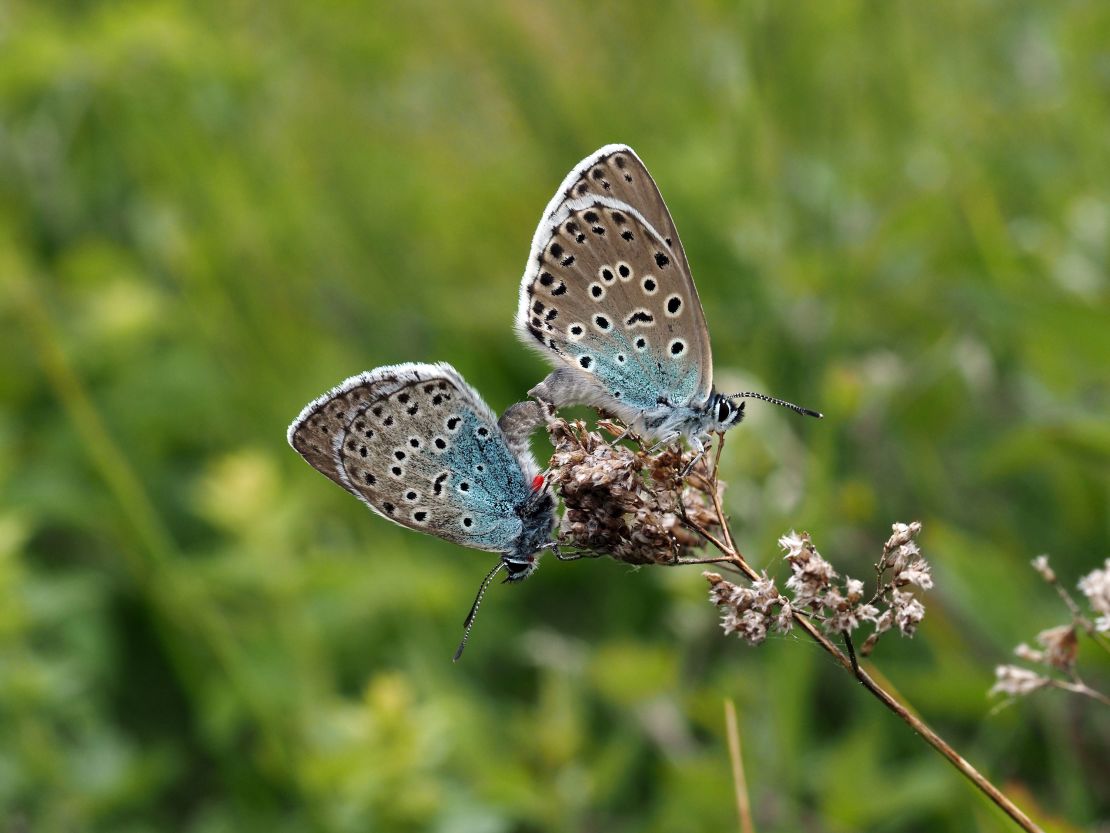Finally, some good news! Conservationists have successfully reintroduced previously extinct large blue butterflies to the UK, with the creatures populating parts of the country for the first time in 150 years.
Around 750 large blue butterflies, recognizable by the distinct row of black spots on its upper forewing, emerged this summer in Rodborough Common in Gloucestershire, southwest England, after experts released 1,100 larvae to the site last year.
The globally endangered creatures, which have a wingspan of more than two inches, were declared extinct in Britain in 1979 and hadn’t been seen in Rodborough for 150 years.

Experts from the National Trust, Butterfly Conservation, the Limestone’s Living Legacies Back from the Brink project, Natural England, Royal Entomological Society and the Minchinhampton and Rodborough Committees of Commoners spent five years preparing the area for the butterflies.
Key to the project’s success was to control the area’s red ant populations – “myrmica sabuleti” – which are crucial to the large blue butterfly’s life cycle.
David Simcox, research ecologist, said: “In the summer when the ants are out foraging, nature performs a very neat trick – the ants are deceived into thinking that the parasitic larva of the large blue is one of their own and carry it to their nest.”
“It’s at this point that the caterpillar turns from herbivore to carnivore, feeding on ant grubs throughout the autumn and spring until it is ready to pupate and emerge the following summer,” he explained in a statement.

Experts restricted cattle grazing and controlled the area’s scrub cover to aid the area’s ant population, and encouraged the growth of wild thyme and marjoram plants, which are a source of food and a key egg laying habitat for the butterflies.
The butterfly has been re-introduced to the UK from continental Europe as part of an almost 40-year conservation project. Experts say that the insects have established a “stronghold” at core sites around the country, and in some cases have naturally colonized some areas in southern England.
“Butterflies are such sensitive creatures, and with the large blue’s particular requirements they are real barometers for what is happening with our environment and the changing climate,” Richard Evans, area ranger for the commons, said in a statement.
“Creating the right conditions for this globally endangered butterfly to not only survive but to hopefully thrive has been the culmination of many years work,” he added.
“One of the greatest legacies of the re-introduction is the power of working together to reverse the decline of threatened species and the benefit the habitat improvements will have for other plants, insects, birds and bats on the commons,” he said.



